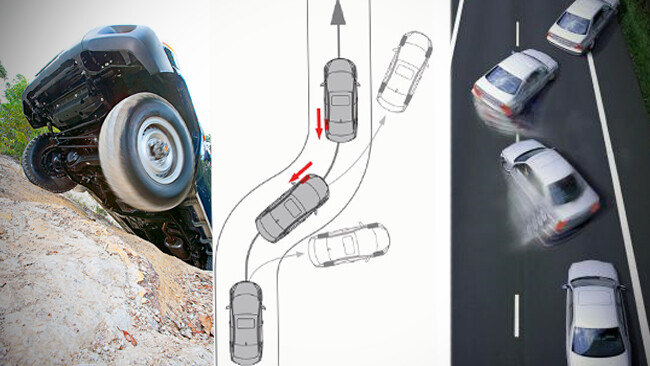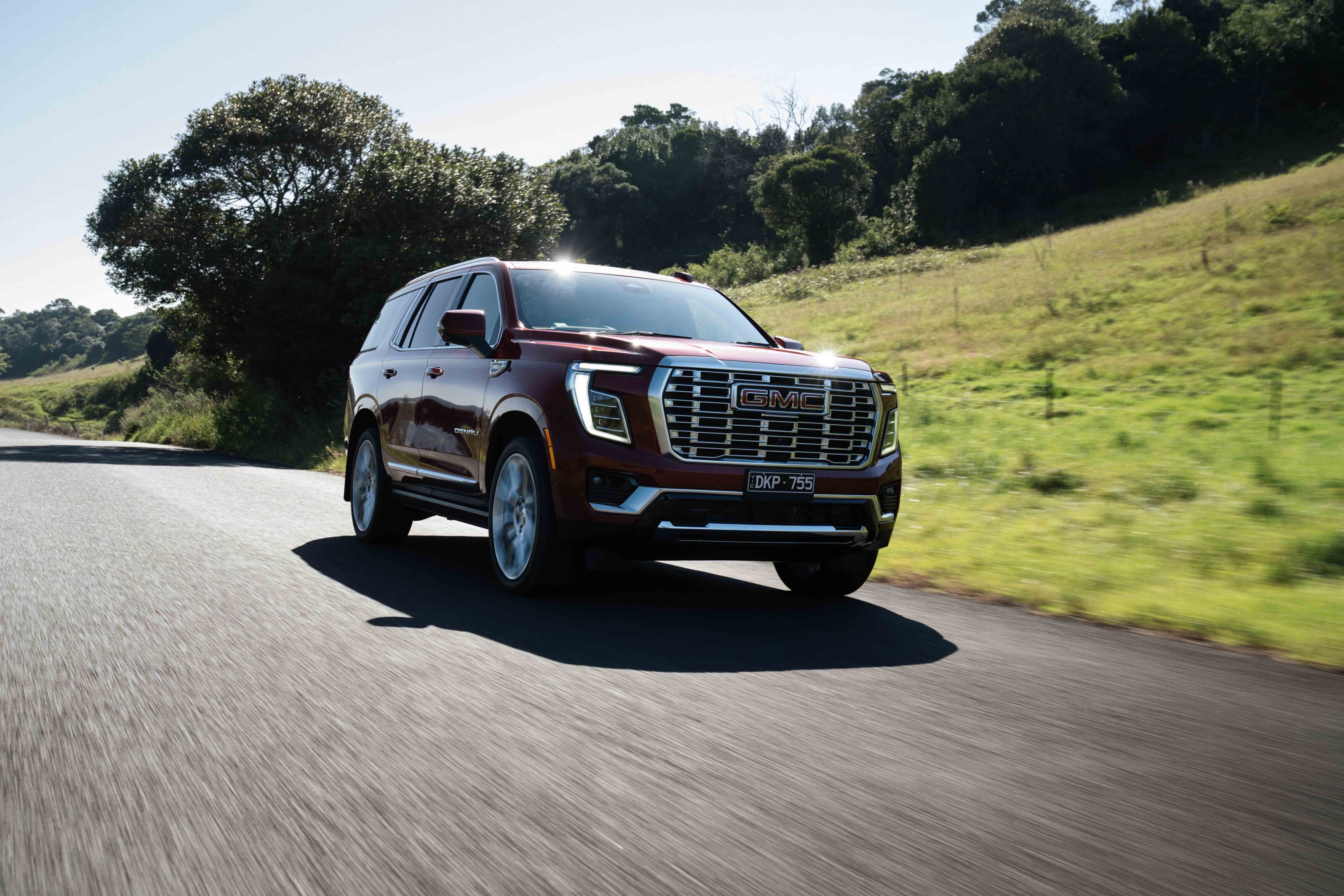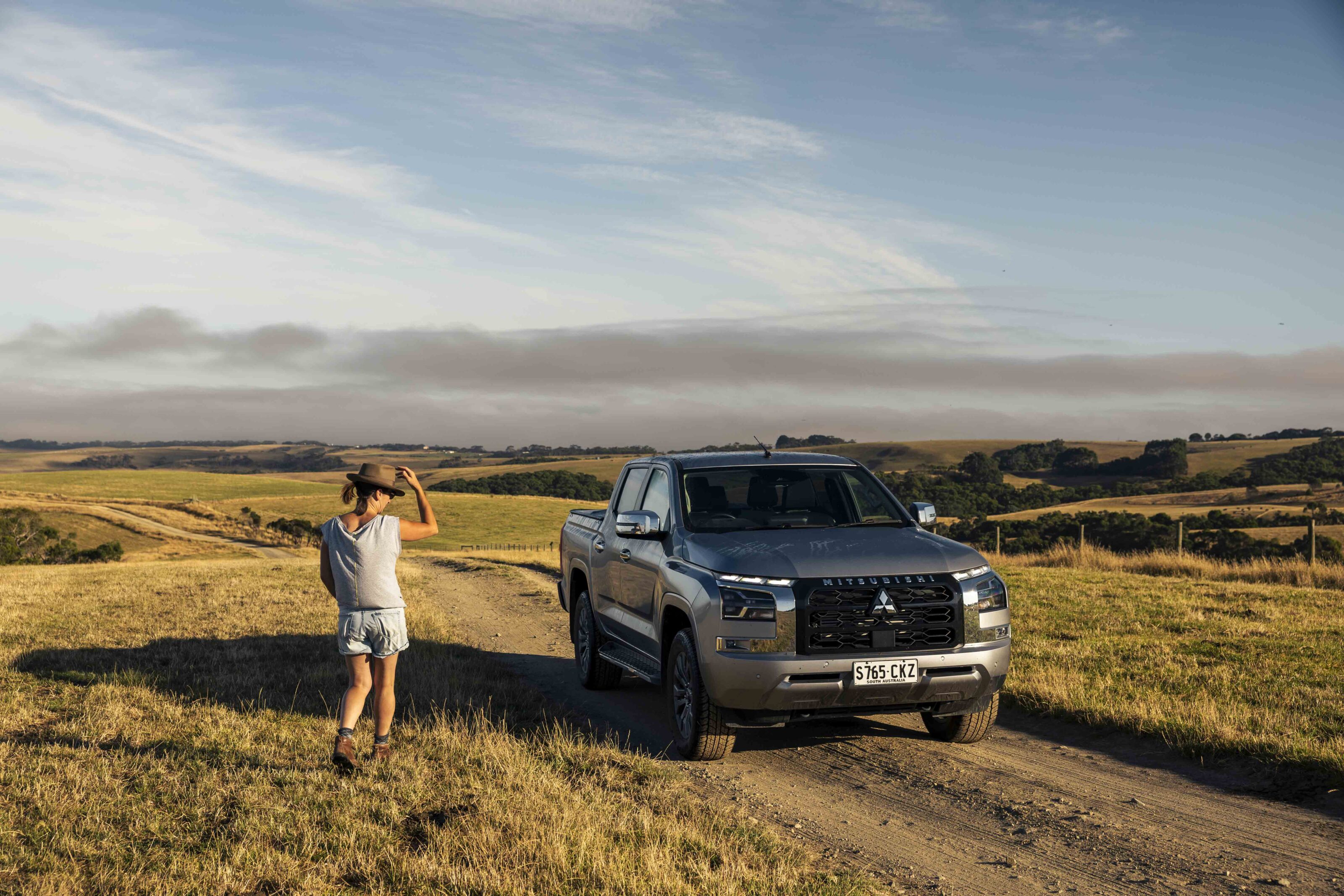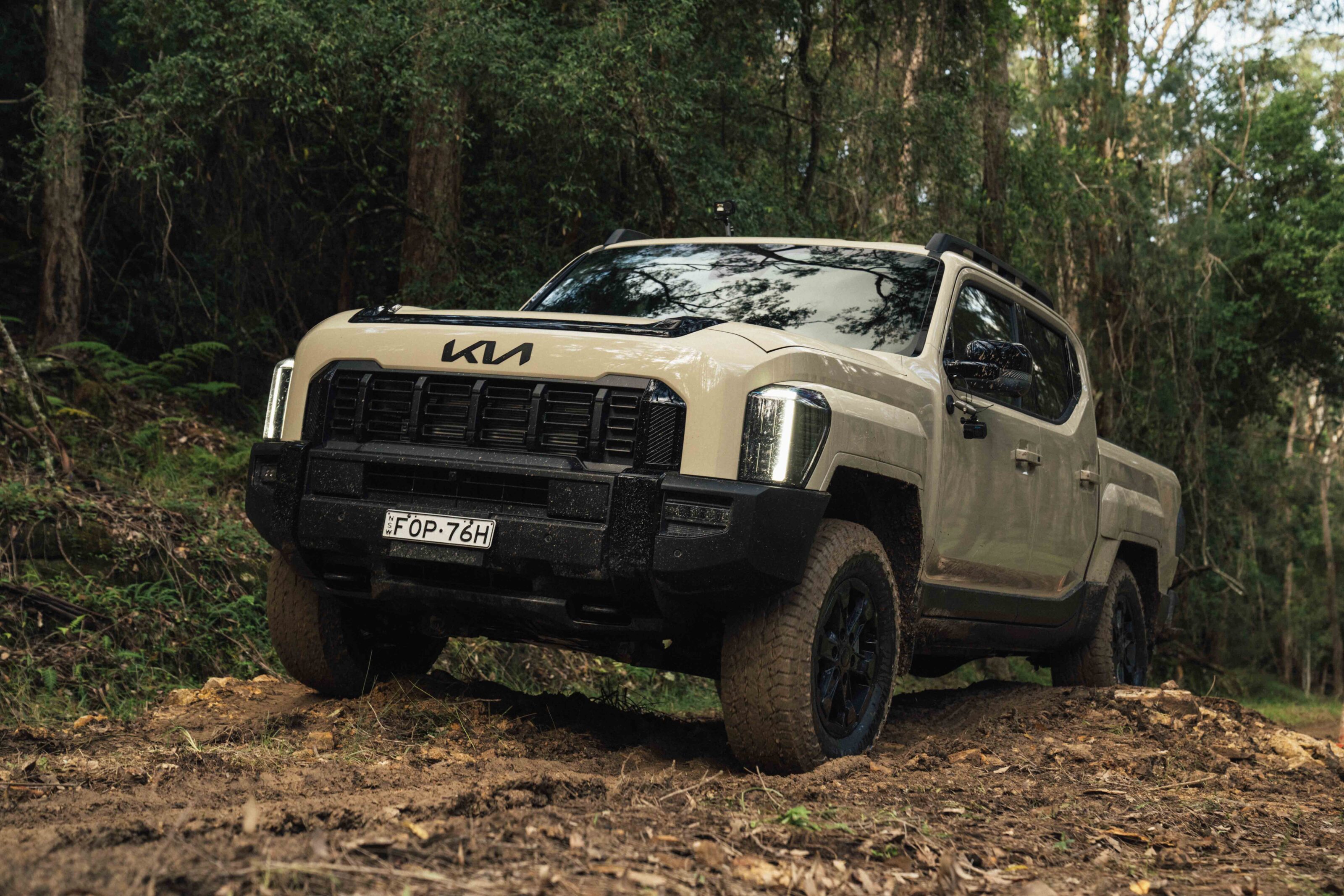The development of traction control over the past two decades has had a huge impact on four-wheel driving.
Electronic traction aids have become more complex and effective over the years, but they are essentially designed to perform one simple task – to prevent wheel spin by applying braking pressure to wheels without traction, thereby directing engine power to the wheels with grip.
Electronic traction control was originally developed as a by-product of ABS braking systems, but well before the advent of wheel-speed sensors, ABS brakes, engine control units (ECU) and even electronic fuel injection, there were a number of mechanical traction aids available to four-wheel drivers.
EARLY DAYS
Back when small 4X4s were in their infancy, starting with the Willys Jeep in WWII, most had live axles front and rear with long-travel leaf springs designed to offer as much axle articulation as possible to keep all four wheels on the ground over undulating terrain. The advantage of a live-axle set-up in off-road conditions is that, as one wheel is pushed upwards by the terrain, the wheel on the other side of the axle is forced downwards so, until full suspension travel has been exceeded, all four wheels remain in contact with the ground.
Early four-wheel drives had open differentials front and rear, because the wheels on each side of a vehicle need to turn at different speeds when the vehicle is cornering on hard surfaces. But off-road, keeping the wheels in contact with the ground is vital because if a wheel on one side of the axle were to lose traction, engine power would be directed to that wheel through the open diff resulting in useless wheel spin, while the wheel with grip would not turn at all.
One method to overcome this problem was for the driver to apply brake pressure. This would stop the wheel in the air from spinning uselessly and would direct engine power across the axle to the wheel with grip, hopefully driving the vehicle far enough forwards or backwards that it would overcome the obstacle and all four wheels would be back in contact with the ground. In effect, this was the first form of traction control.
Of course, one method to limit wheel spin was to provide more wheel travel, achieved partly by fitting longer travel springs to a vehicle, along with redesigned suspension geometry. Land Rover’s solution was to fit long-travel coil springs to the first Range Rover, introduced in 1970; this proved extremely effective off the road, because with more wheel travel there was less likelihood that a wheel would lift off the ground and lose traction, but the downside was that it resulted in excessive body roll when cornering on the road.
The solution was to fit sway bars, but this in turn limited wheel travel. One solution was to fit manual sway-bar disconnects for off-road use – drive on the road with the sway bars connected to limit body roll and then get out of the vehicle and disconnect them for off-road driving when maximum wheel travel is required. Some vehicles, such as the Nissan GQ Patrol as sold in some markets, were offered with remote sway bar disconnects that could be operated from within the vehicle via a switch on the dash.
Limited-slip differentials (LSDs) were fitted to many vehicles in order to (as their name suggests) limit the slip to the wheels with the least amount of grip, therefore directing more engine power to the wheels with grip. Some LSDs worked better than others, but they all worked better than open diffs in limiting wheel spin. LSDs, however, could only be fitted to the rear axle, as they would impact the steering characteristics of a vehicle if fitted to the front axle.
SAME DIFF
Before the advent of electronics, the best traction aid available to four-wheel drivers was the diff lock, which is still used in many applications today. Manually operated diff locks allow complete differential action (like an open diff) until the diff lock is engaged when needed off-road.
This means that handling on the road is not affected, so diff locks can be fitted to front and rear axles. Again, as its name suggests, a diff lock totally eliminates the differential action across the axle so both wheels turn at the same speed when the diff lock is engaged. This essentially means that, so long as one wheel on an axle has grip, it should be able to drive the vehicle forward as it receives all of the available engine power to do so, because none is being wasted to useless wheel spin across the other side of the axle.
The problem with manually operated diff locks is that they need to be engaged by the driver, and an inexperienced driver might not engage the diff locks when required, so the vehicle could become hopelessly stuck. Conversely, an inexperienced driver may engage both of the diff locks when not required, affecting the vehicle’s handling and ability to steer to the point that the driver could lose control.
ABS IN REVERSE
There had to be a better way and, according to vehicle manufacturers, electronics held the answer. Electronic anti-lock braking systems (ABS) have been used in automobiles since the 1970s. In modern ABS systems, the vehicle’s ECU analyses information from individual sensors at each wheel. If, under braking, there is an anomaly in wheel speeds, the ECU actuates the ABS modulator, which rapidly turns braking valves on and off to prevent the wheel from locking, hence the pulsating feeling through the brake pedal when the ABS is actuated.
Electronic traction control (ETC) systems are essentially ABS in reverse. By using the wheel-speed sensors to detect anomalies in wheel speed under acceleration, the ECU can rapidly provide braking pressure to individual wheels via the braking valves to automatically eliminate wheel spin. Again, by rapidly turning the braking valves on and off, you get that same pulsating sensation when the ETC is activated as you do when the ABS is activated.
The first four-wheel drive to be fitted with any form of ETC was the 1992 Range Rover, and it only operated on the rear axle. This system was again fitted to the then-new P38A Range Rover, launched in Australia in 1995.
By this time, BMW was the owner of Land Rover, and the Freelander soft-roader was under development. In addition to ABS brakes and four-wheel electronic traction control, the 1997 Freelander was fitted with an innovative new system called Hill Descent Control (HDC). As the Freelander wasn’t equipped with low-range gearing, HDC was designed to limit vehicle speed on steep descents by using the electronic ABS and traction control systems.
Although quite effective, this first incarnation of HDC was criticised because the target speed on descents was considered too fast for very steep descents. However, as the Freelander was a softroader, it should never have really been driven in locations where the terrain was excessively steep in the first place.
In 1998, Land Rover equipped its Discovery II with electronic ABS, four-wheel ETC and HDC, combining these traction aids with genuine low-range gearing. This meant that the Discovery had open diffs front and rear for optimum on-road performance, and it relied entirely on its electronic traction aids to prevent wheel spin in off-road conditions.
Land Rover was so confident in the electronics package that it even discarded the Discovery’s centre diff lock, relying on the ETC to prevent wheel-speed discrepancies between the front and rear axles. This last step proved one too far for the electronic traction aids and when the Discovery was face-lifted in 2002, the centre diff lock made a welcome return. Now equipped with live axles front and rear, long-travel coil spring suspension, good low-range gearing, a centre diff lock, ETC and HDC, the Disco II was one of the most capable out-of-the-box off-road vehicles on the market.
Other manufacturers saw the benefits of ETC and soon introduced them to their off-road models. One was Mitsubishi with its Pajero, which benefited greatly from being equipped with ETC because it had limited wheel travel due to its fully independent suspension design.
Other electronic traction aids were soon introduced, such as electronic stability control. By using the ETC’s existing wheel-speed and steering-wheel angle sensors – and adding acceleration, roll and yaw sensors, along with complex software – stability control automatically cuts or adds power, or applies braking pressure to individual wheels, to prevent the vehicle losing control on the road.
For off-road vehicles, the ability to disable the stability control system for off-road use is paramount, because a cut to engine power when a vehicle slides around off-road is often the last thing you want when you’re trying to maintain forward progress in slippery conditions such as mud or sand.
GETTING A GRIP
It was again Land Rover who introduced the latest trend in electronic driver aids, this time under the moniker Terrain Response, fitted to the 2004 Discovery 3. In its fully optioned guise, Terrain Response works like other ETC systems, but it adds vehicle height control, automatic electronically engaging and disengaging front, centre and rear diff locks, and five selectable programs tailored to suit different driving conditions, which are for general driving; grass, gravel, snow; mud and ruts; sand; and rock crawl.
The different programs offered by Terrain Response adjust many of the vehicle’s parameters, including suspension ride height, engine management, throttle mapping, transfer case ranges, transmission settings, ETC, stability control and HDC. They also affect the operation of the electronically controlled diff locks.
The result of all of the technology packed into Terrain Response, combined with the right chassis hardware and Land Rover’s innate knowledge of off-road requirements, was that the Discovery once again set the benchmark in traction control. Other manufacturers, including Mercedes-Benz, Toyota and Jeep have developed their own versions of Terrain Response, but none have yet come close to the effectiveness of the Land Rover system for off-road use.
There is no doubt that traction control has made off-road vehicles more capable than ever before and, more importantly, it has made off-road driving simpler and safer than ever before. Where will the next development in electronic driver aids come from? No one yet knows but, if history is anything to go by, there’s probably a Pommie chap in green overalls somewhere in Land Rover’s complex at Solihull who’s just had a great idea.





